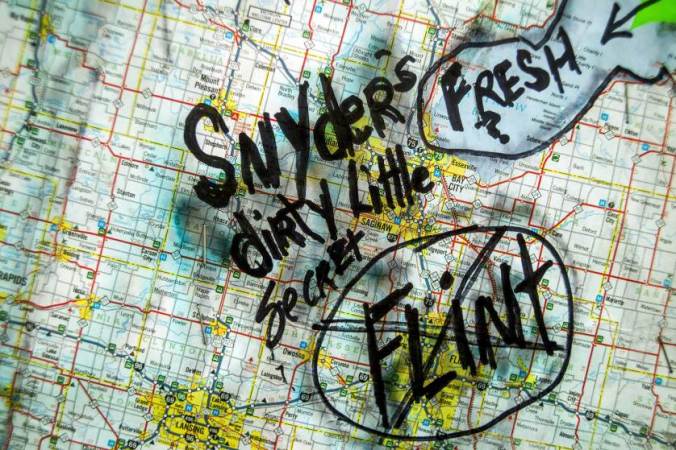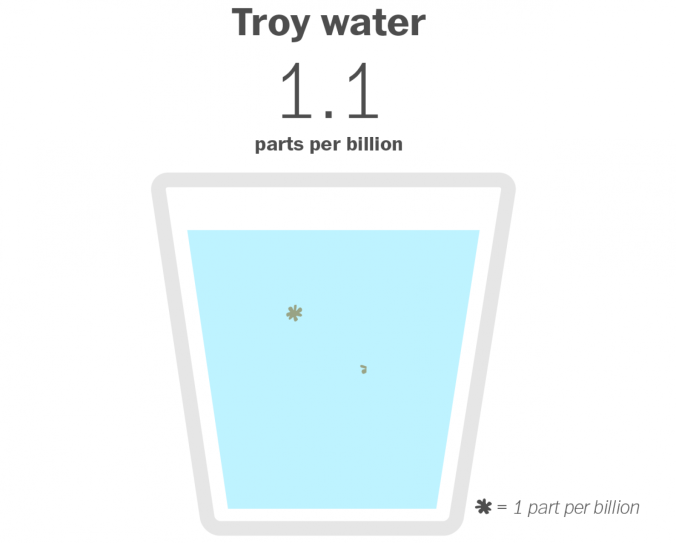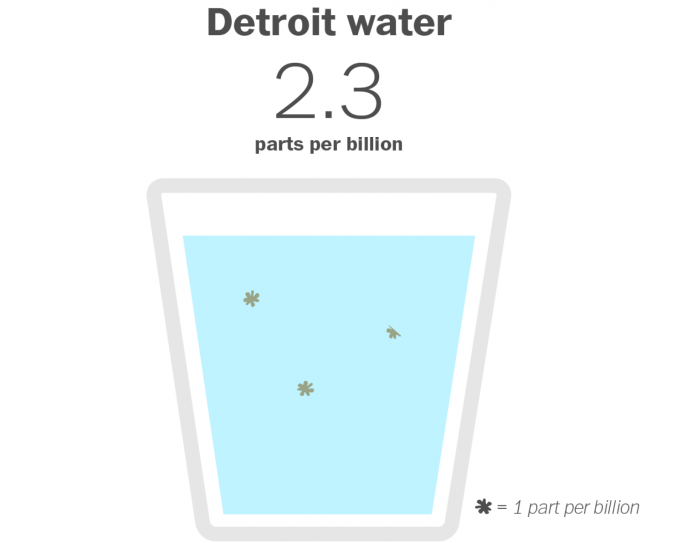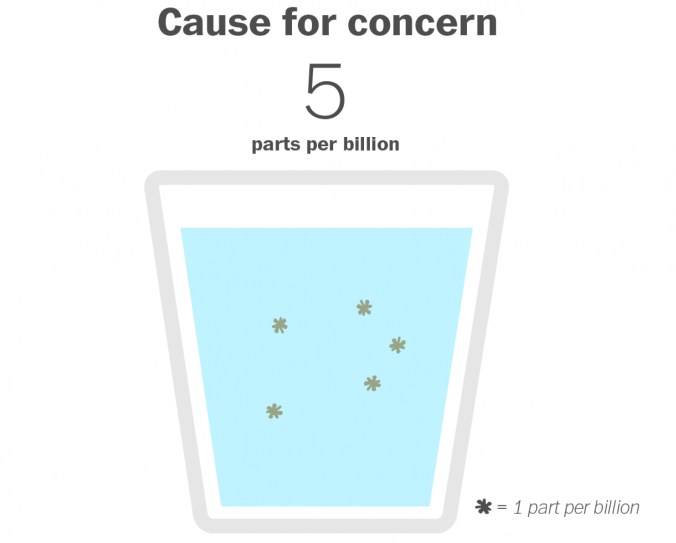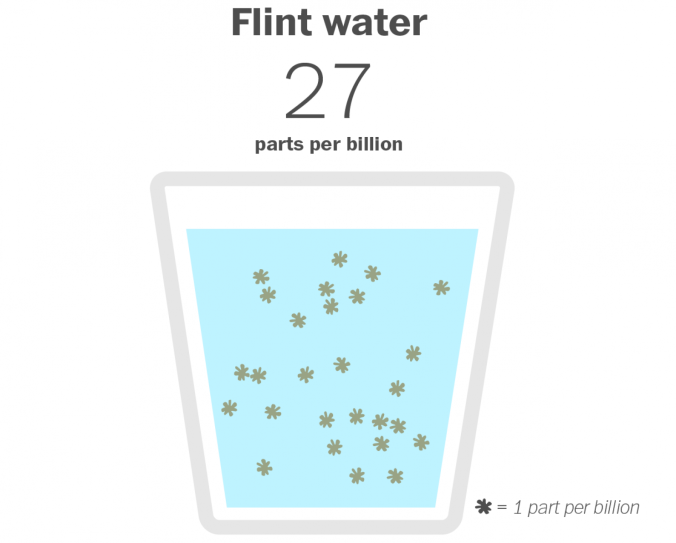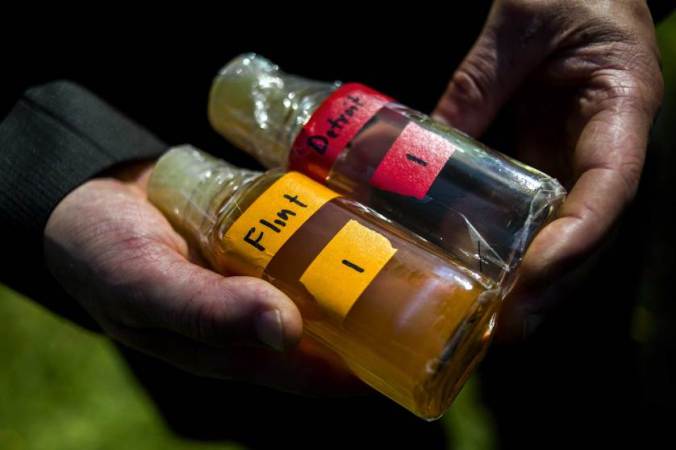 Photo: Jeffrey Dunn
Photo: Jeffrey Dunn
Hello World! It’s been a few months since my last post. Can you believe how much has happened in such a short period of time? It was the best of times, it was the worse of times.
I don’t care how you slice it, 2016 has been a crazy year – the onslaught continues in Syria, a failed coup in Turkey leads to mass arrest, violence and deaths; an economic collapse in Venezuela leads to a sharp increase in violent crimes and civil unrest; death squads in the Philippines rage on, migrants perishing in the Mediterranean; a 50+ year war ends with a peace agreement between Colombia and FARC; U.S. leads in gold medals at Olympics in Rio while children peer from favelas at the festivities; the United Kingdom votes to leave the European Union (“Brexit”); terrorists come up with more ingenious way to murder innocent people; the Cubs end a 108-year losing streak to win the World Series; America elects Donald Trump as its 45th president; and a litany of notable people – both good and bad- passed away, including Elie Wiesel, Prince, David Bowie, Gene Wilder, Muhammad Ali, Pat Summitt, and Fidel Castro . . .to name a few.
In fact, so much has happened that I feel the need to acknowledge and highlight some of the major events I missed while away. So that’s the goal of this post and the events below begin in June 2016 – the last month I posted – and go through November 2016. The list below is by no means exhaustive, nor is it intended to be. And I deliberately excluded a few stories, they will appear as individual posts directly above this one in the coming days. Lastly, I included mini slideshow and names of a few notable people who have passed away since June.
Some of my readers may be curious about the title, A Wild World Upside. Don’t overthink it. Instead think about how you would describe the ebb and flow of 2016. For me, it describes the tumultuous and tenuous nature of our quickly changing world – one in which basic human rights, respect for the rule of law, and civility are being muted by crippling fear, hatred, intolerance and demagoguery. The world is changing – for better or worse and whether we like it or not. Fissures of instability are exploding all around us. The only certainty seems to be uncertainty. Tension. Lies are being traded as capital, mistrust sown deep. It feels we’re all on high alert. So the title connotes my gut reaction to all that has come to pass, all that seems to be falling apart, and all that remains to be seen. Now, let’s get to it!
❧❧❧❧❧❧❧❧❧❧❧❧❧❧❧❧❧❧❧❧❧❧❧❧❧❧❧❧❧❧❧❧❧❧❧❧❧❧❧❧❧❧❧
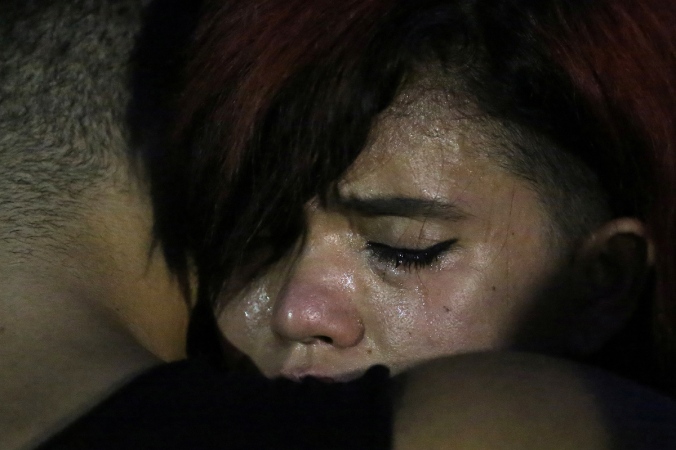
A woman cries during a vigil in a park following a mass shooting at the Pulse gay nightclub in Orlando, Florida, on June 12, 2016. (Photo: Carlo Allegri / Reuters)
June 12: Gunman Kills 49 at Pulse Nightclub (Orlando, Florida)
On 12 June 2016, Omar Mateen, a 29-year-old security guard, killed 49 people and wounded 53 others in a terrorist attack/hate crime inside Pulse, a gay nightclub in Orlando, Florida, United States. He was shot and killed by Orlando Police Department (OPD) officers after a three-hour standoff. Pulse was hosting Latin Night and most of the victims were Latino. It was both the deadliest mass shooting by a single shooter and the deadliest incident of violence against LGBT people in United States history. It was also the deadliest terrorist attack in the United States since the September 11 attacks in 2001.
In a 9-1-1 call shortly after the shooting began, Mateen swore allegiance to the leader of the Islamic State of Iraq and the Levant (ISIL), Abu Bakr al-Baghdadi, and said the shooting was “triggered” by the U.S. killing of Abu Waheeb in Iraq the previous month. He later told a negotiator he was “out here right now” because of the American-led interventions in Iraq and in Syria, and that the negotiator should tell the United States to stop bombing ISIL.
Initial reports said Mateen may have been a patron of the nightclub and used gay dating websites and apps, but Federal Bureau of Investigation (FBI) officials said they have not found any credible evidence to substantiate these claims. The Central Intelligence Agency (CIA) also conducted an investigation and said it found no links between ISIL and Mateen.

Photographs of the nine victims killed at the Emanuel African Methodist Episcopal Church in Charleston, S.C. are held up by congregants during a prayer vigil at the the Metropolitan AME Church June 19, 2015 in Washington, DC. (Photo: Win McNamee / Getty Images)
June 17: The Charleston Church Massacre (Charleston, South Carolina)
The Charleston church shooting (also known as the Charleston church massacre) was a mass shooting that took place at the Emanuel African Methodist Episcopal Church in downtown Charleston, South Carolina, United States, on the evening of June 17, 2015. During a prayer service, nine people were killed by a gunman, including the senior pastor, state senator Clementa C. Pinckney; a tenth victim survived. The morning after the attack, police arrested a suspect, later identified as 21-year-old Dylann Roof, in Shelby, North Carolina. Roof later confessed that he committed the shooting in hopes of igniting a race war.
The United States Department of Justice investigated whether the shooting was a hate crime or an act of domestic terrorism, eventually indicting Roof on 33 federal hate crime charges. Emanuel African Methodist Episcopal Church is one of the United States’ oldest black churches and has long been a site for community organization around civil rights. Roof is to be indicted on federal hate crime charges, and has been charged with nine counts of murder by the State of South Carolina. If convicted, he could face a sentence of death or thirty years to life in prison. A website apparently published by Roof included a manifesto detailing his beliefs on race, as well as several photographs showing him posing with emblems associated with white supremacy. Roof’s photos of the Confederate battle flag triggered debate on its modern display. In November 2016, Roof was declared competent to stand trial for the crimes.
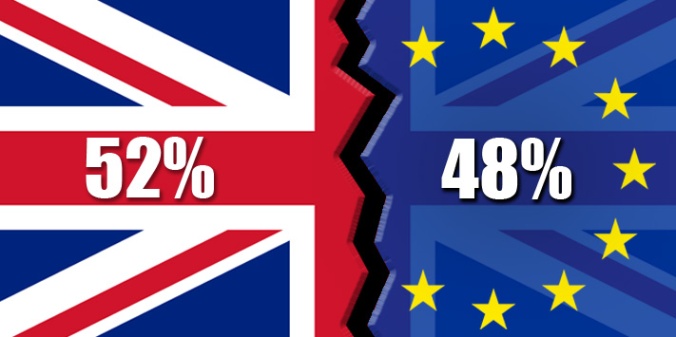
June 23: Brexit – The United Kingdom Votes to Leave European Union (United Kingdom)
The United Kingdom European Union Membership Referendum, also known as the EU referendum and the Brexit referendum (a portmanteau of “British exit”), took place on 23 June 2016 in the United Kingdom (UK) and Gibraltar to gauge support for the country’s continued membership in the European Union (EU). The result was an overall vote to leave the EU, of 51.9% on a national turnout of 72%, the highest ever for a UK-wide referendum and the highest for any national vote since the 1992 General Election. In the constituent countries of the United Kingdom, a majority in England and Wales voted to leave, and a majority in Scotland and Northern Ireland voted to remain. The British Overseas Territory of Gibraltar also voted to remain. To start the process to leave the EU, which is expected to take several years, the British government will have to invoke Article 50 of the Treaty on European Union. The UK government has announced that it will start the formal process of leaving the EU (triggering article 50) by March 2017.
Membership of the EU and its predecessors had long been a topic of debate in the United Kingdom. The country joined the European Economic Community (EEC, or “Common Market”) in 1973. A referendum on continued EEC membership was held in 1975, and it was approved by 67% of voters. Historical opinion polls 1973-2015 tended to reveal majorities in favor of remaining in the EEC, EC or EU. In accordance with a Conservative Party manifesto commitment, the legal basis for a referendum was established by the UK Parliament through the European Union Referendum Act 2015.
“Britain Stronger” in Europe was the official group campaigning for the UK to remain in the EU and was endorsed by the Prime Minister David Cameron and Chancellor George Osborne. “Vote Leave” was the official group campaigning for the UK to leave the EU and was fronted by the Conservative MP Boris Johnson and Secretary of State for Justice Michael Gove.
Immediately following the result, Cameron announced he would resign, having campaigned unsuccessfully for a “Remain” vote. He was succeeded by Theresa May on July 13. The opposition Labour Party also faced a leadership challenge as a result of the EU referendum. In response to the result, the Scottish Government announced that it would plan for a possible second referendum on independence from the United Kingdom, and that it would like to “explore all the possible options to protect Scotland’s place in the EU.”
Financial markets reacted negatively in the immediate aftermath of the result. Investors in worldwide stock markets lost more than the equivalent of 2 trillion US dollars on 24 June 2016, making it the worst single-day loss in history, in absolute terms. The market losses amounted to 3 trillion US dollars by June 27.
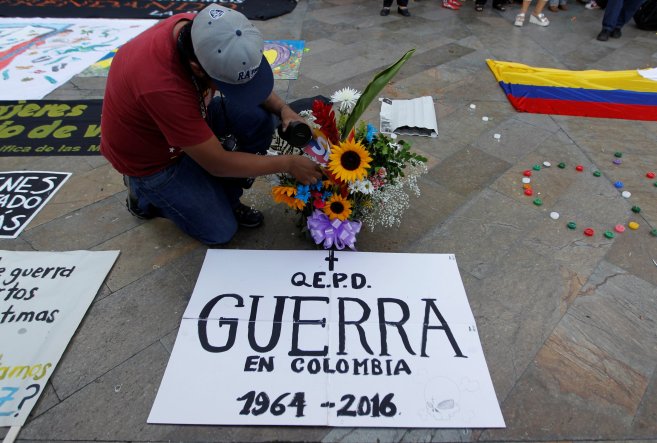
A man celebrates the signing of a historic ceasefire deal between the Colombian government and FARC rebels at Botero Square in Medellin, Colombia, on June 23, 2016. The sign reads, “RIP the War in Colombia 1964 – 2016.” (Photo: Fredy Builes / Reuters)
June 23: Colombia and FARC Agree to End 52 Year Civil War (Havana, Cuba)
The Colombian Peace Agreement refers to the peace process between the Colombian government of President Juan Manuel Santos and the Revolutionary Armed Forces of Colombia – People’s Army (FARC–EP) to bring an end to the Colombian conflict. Negotiations began in September 2012, and mainly took place in Havana, Cuba. On June 23, the government and the FARC reached an agreement on three of the main points – bilateral and definite ceasefire, decommissioning of weapons and security guarantees – of the third item on the agenda, ‘end of the conflict’.
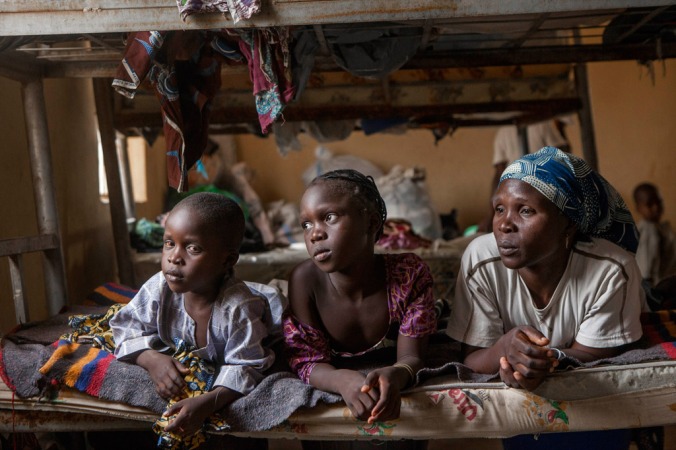
A woman and her children in a camp for internally displaced persons, in Yola, the capital of Adamawa, Nigeria, after members of the Boko Haram rebel group attacked their home. (Photo: UNICEF/ Abdrew)
June 26: Nigerian Army Rescues 5,000 from Boko Haram (Borno, Nigeria)
The Nigerian army says it has rescued more than 5,000 people who were being held hostage by Boko Haram following a clearing operation in four remote villages in the northeastern Borno state. The fighting led to the killing of one civilian and six Boko Haram fighters. The 5,000 rescued, mostly women and children, had been living under Boko Haram for more than six years, since the armed group launched its violent campaign in 2009. The army also reported that two other Boko Haram fighters were killed in a separate mission to 11 villages in Borno. Boko Haram pledged support for the Islamic State of Iraq and the Levant (ISIL, also known as ISIS) last year. See The Brutal Toll of Boko Haram Attacks on Civilians for additional information.
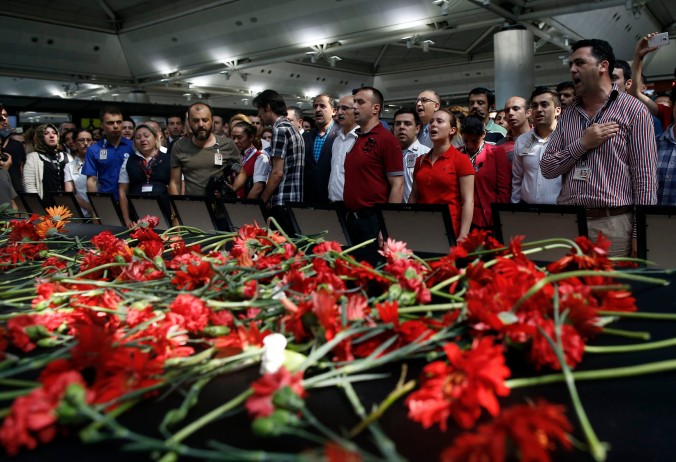
Family members, colleagues and friends of the victims of Tuesday blasts gather for a memorial ceremony at the Ataturk Airport in Istanbul, Thursday, June 30, 2016. Turkish authorities have banned distribution of images relating to the Ataturk airport attack within Turkey. (Photo: AP Photo/ Emrah Gurel)
June 28: Atatürk Airport Attack (Istanbul, Turkey)
A terrorist attack, consisting of shootings and suicide bombings, occurred on 28 June 2016 at Atatürk Airport in Istanbul, Turkey. Gunmen armed with automatic weapons and explosive belts staged a simultaneous attack at the international terminal of Terminal 2. Forty-five people were killed, in addition to the three attackers, and more than 230 people were injured.
Media reports indicated that the three attackers were believed by Turkish officials to have come from Russia and Central Asia. Turkish officials said the attackers were acting on behalf of the Islamic State of Iraq and Levant and had come to Turkey from ISIL-controlled Syria. Commentators suggested that the attacks may have been related to stepped-up pressure against the group by Turkish authorities. No one claimed responsibility for the attack.
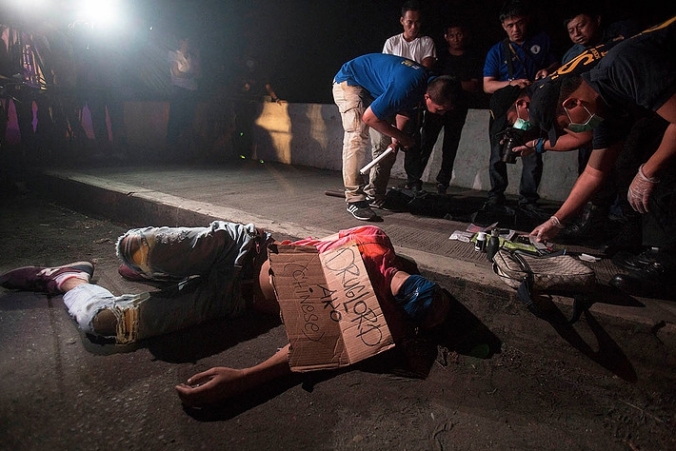
A victim of summary execution, with packing tape wrapped around his head and a sign on his chest that reads, “I am a Chinese drug lord,” found along Road 10 in Manila. (Photo: Linus G. Escandor II/PRI)
June 30: Philippine President Declares ‘Bloody War on Drugs’ in Inaugural Address (Manila, Philippines)
Philippine President Rodrigo Duterte was elected in May promising a “bloody war” on drugs. Since he took office in June, he has made good on that pledge. Roughly 5,000 people have been killed since the war on drugs began in July, according to the Philippines National Police. Two thousand were killed in encounters with police and 3,000 in extrajudicial or vigilante-style killings. The international community, human rights groups, Roman Catholic activists and the families of many of those killed during the crackdown say that the vast majority of victims were poor Filipinos, many of whom had nothing to do with the drug trade. Those presumed guilty are not accorded an accusation and a trial, but are simply shot down in the streets, the critics say.
This is not the first time, Duterte has been accused of gross human rights violations. While he was the mayor of Davao City in the southern Philippines, hundreds of people were killed by what human rights groups say were government-linked death squads. Mr. Duterte denies involvement with the killings but made little secret of his support for a violent approach to curbing crime.

People gather at site of suicide car bombing in Karrada shopping area in Baghdad on July 3, 2016. (Photo: Reuters)
July 3: Karrada Bombing (Baghdad, Iraq)
On 3 July 2016, a coordinated bomb attack in Baghdad resulting in the deaths of over 300 and injured hundreds more. A few minutes after midnight local time (2 July, 21:00 UTC), a suicide truck targeted the mainly Shia district of Karrada, busy with late night shoppers for Ramadan. A second roadside bomb was detonated in the suburb of Sha’ab, killing at least five.
The Islamic State issued a statement claiming responsibility for the attack, naming the Karrada bomber as Abu Maha al-Iraqi. There were reports that the source of the blast was a refrigerator van packed with explosives. The explosion caused a huge fire on the main street. Several buildings, including the popular Hadi Center, were badly damaged. The bombing is the second-worst suicide attack in Iraq by death toll after the 2007 Yazidi communities bombings and the deadliest terrorist attack in Iraq carried by a single bomber.
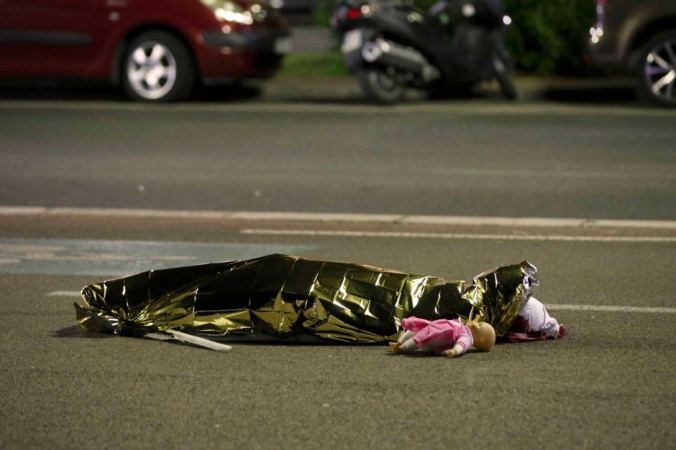
A body lies next to a baby doll on July 15, 2016 after a truck ran into a crowd celebrating the Bastille Day national holiday July 14. (Photo: Eric Gaillard/ Reuters)
July 14: Bastille Day Attack (Nice, France)
On the evening of 14 July 2016, a 19 tonne cargo truck was deliberately driven into crowds celebrating Bastille Day on the Promenade des Anglais in Nice, France, resulting in the deaths of 86 people and injuring 434. The driver was Mohamed Lahouaiej-Bouhlel, a Tunisian resident of France. The attack ended following an exchange of gunfire, during which Lahouaiej-Bouhlel was shot and killed by police.
Five hours after the attack, French President François Hollande announced an extension of the state of emergency (which had been declared following the November 2015 Paris attacks) for a further three months, announced an intensification of the French military attacks on ISIL in Syria and Iraq, and suggested the attack might have been Islamic terrorism. France later extended the state of emergency until 26 January 2017.
Later on 15 July, the French government declared three days of national mourning starting 16 July. On 16 July, two agencies linked to the Islamic State of Iraq and the Levant (ISIL) claimed that the attack was inspired by the organization. On 21 July, Paris prosecutor François Molins said that Lahouaiej-Bouhlel planned the attack for months and had help from accomplices. By 1 August, six suspects had been taken into custody on charges of “criminal terrorist conspiracy”, three of whom were also charged for complicity in murder connected to a terrorist organization.
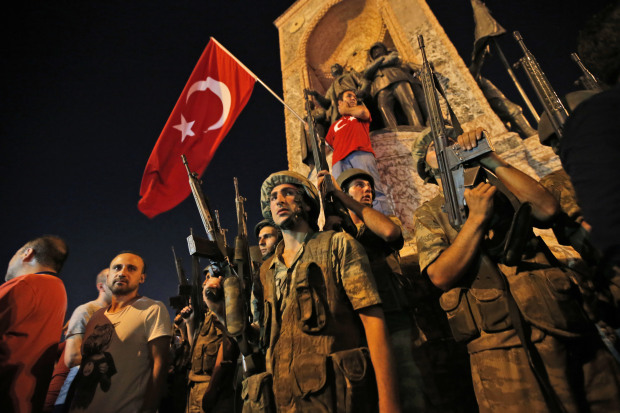
Turkish soldiers secure the area, as supporters of Turkey’s President Recep Tayyip Erdogan protest in Istanbul’s Taksim square, early Saturday, July 16, 2016. (Photo: Emrah Gurel/ AP)
July 15: Turkish Coup d’Etat Attempt (Turkey)
On 15 July 2016, a coup d’état was attempted in Turkey against state institutions, including, but not limited to the government and President Recep Tayyip Erdoğan. The attempt was carried out by a faction within the Turkish Armed Forces that organized themselves as the Peace at Home Council. They attempted to seize control of several key places in Ankara, Istanbul, and elsewhere, but failed to do so after forces loyal to the state defeated them. The Council cited an alleged erosion of secularism, the elimination of democratic rule, a disregard for human rights, and Turkey’s loss of credibility in the international arena as reasons for the coup. The government accused the coup leaders of being linked to the Gülen movement, which is designated as a terrorist organization by the Republic of Turkey and led by Fethullah Gülen, a Turkish businessman and cleric who lives in Pennsylvania, United States. Erdoğan accuses Gülen of being behind the coup—a claim that Gülen denies—and accused the United States of harboring him. Events surrounding the coup attempt and the purges in its aftermath reflect a complex power struggle between Islamist and ultranationalist elites in Turkey.
During the coup, over 300 people were killed and more than 2,100 were injured. Many government buildings, including the Turkish Parliament and the Presidential Palace, were damaged. Mass arrests followed, with at least 40,000 detained, including at least 10,000 soldiers and, for reasons that remain unclear, 2,745 judges.15,000 education staff were also suspended and the licenses of 21,000 teachers working at private institutions were revoked as well after the government alleged they were loyal to Gülen. More than 100,000 people have been purged.
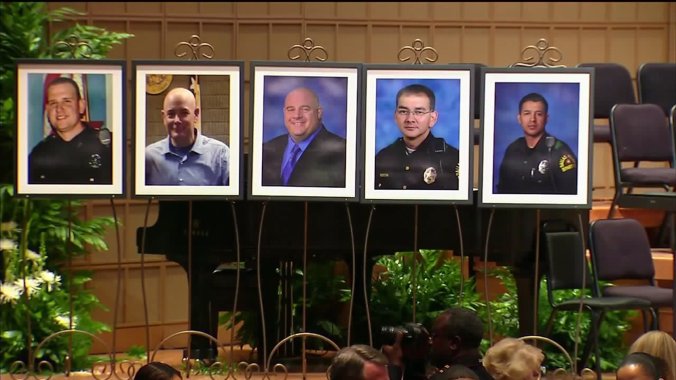
Portraits of five Dallas and DART police officers shot to death by a sniper on July 12, 2016, are displayed during the memorial service at the Morton H. Meyerson Symphony Center in Dallas. (Photo: Paul Moseley / Ft. Worth Star Telegram)
July 17: Five Dallas Police Officers Ambushed and Killed (Dallas, Texas)
On July 7, 2016, Micah Xavier Johnson ambushed and fired upon a group of police officers in Dallas, Texas, killing five officers and injuring nine others. Two civilians were also wounded. Johnson was an Army Reserve Afghan War veteran who was reportedly angry over police shootings of black men and stated that he wanted to kill white people, especially white police officers. The shooting happened at the end of a peaceful protest against police killings of Alton Sterling in Baton Rouge, Louisiana, and Philando Castile in Falcon Heights, Minnesota, which had occurred in the preceding days.
Following the shooting, Johnson fled inside a building on the campus of El Centro College. Police followed him there, and a standoff ensued. In the early hours of July 8, police killed Johnson with a bomb attached to a remote control bomb disposal robot. It was the first time U.S. law enforcement used a robot to kill a suspect.
The shooting was the deadliest incident for U.S. law enforcement since the September 11 attacks, surpassing two related March 2009 shootings in Oakland, California and a November 2009 ambush shooting in Lakewood, Washington; both of these incidents each killed four officers.

A Venezuelan woman, who lives in Malaga, protests against Venezuelan President Nicolas Maduro’s government and the repression in Venezuela, in Malaga, southern Spain on March 29, 2014 (Photo: Jon Nazca/ Reuters)
July 22: Venezuelan President Declares State of Economic Emergency (Venezuela)
In 22 July 2016 decree, President Nicolás Maduro used his executive power to declare a state of economic emergency. The decree could force citizens to work in agricultural fields and farms for 60-day (or longer) periods to supply food to the country. Colombian border crossings have been temporarily opened to allow Venezuelans to purchase food and basic household and health items in Colombia in mid-2016. In September 2016, a study published in the Spanish-language Diario Las Américas indicated that 15% of Venezuelans are eating “food waste discarded by commercial establishments”.
In October 2016, Fox News Latino reported that during a month-long riot at the Táchira Detention Center in Caracas, 40 inmates dismembered and consumed three fellow inmates. There have been close to 200 prison riots in Venezuela in 2016, with the cause being attributed to a worsening social situation, increasing poverty, and food shortages leading to overcrowded prisons.
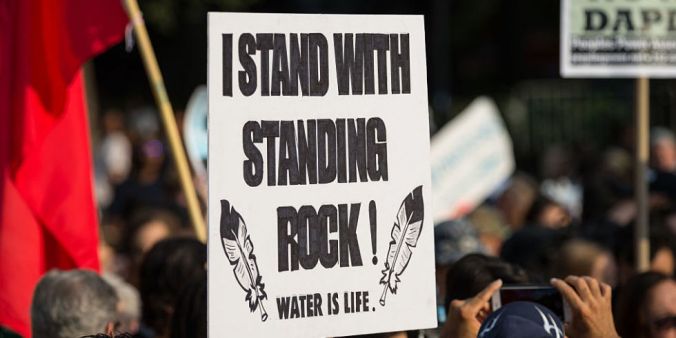
Standing Rock Protesters (Photo: Getty Images + Pacific Press)
July 27: Standing Rock Sioux Tribe Sues U.S. Army Corp of Engineers (Standing Rock Reservation, North Dakota)
The Dakota Access Pipeline is a part of the, a 1,172-mile-long (1,825 km), 30-inch diameter pipeline underground oil pipeline project in the United States. The pipeline is being planned by Dakota Access, LLC, a subsidiary of the Dallas, Texas corporation Energy Transfer Partners, L.P. It begins in the Bakken oil fields in Northwest North Dakota and is set to travel in a more or less straight line southeast, through South Dakota and Iowa, and end at the oil tank farm near Patoka, Illinois. The pipeline is designed transport as many as 570,000 barrels of crude oil daily. Using the Nationwide Permit 12 process that treats the pipeline as a series of small construction sites, the pipeline was granted an exemption from the environmental review required by the Clean Water Act and the National Environmental Policy Act. The nearly $4 billion project was first proposed in 2014 and is anticipated for delivery on January 1, 2017.
Routing the pipeline across the Missouri River near Bismarck was rejected because of the route’s proximity to municipal water sources, residential areas and roads, wetland, and waterway crossings. The Bismarck route would also have been 11 miles longer. The alternative selected by the Corps of Engineers crosses underneath Missouri River, the primary drinking water source for the Standing Rock Sioux, a tribe of around 10,000 with a reservation in the central part of North and South Dakota. A spill could have major adverse effects on the waters that the Tribe and individuals in the area rely upon. The Pipeline and Hazardous Materials Safety Administration (PHMSA) has reported more than 3,300 incidents of leaks and ruptures at oil and gas pipelines since 2010. And even the smallest spill could damage the tribe’s water supply. The Standing Rock Sioux also argue that the pipeline traverses a sacred burial ground. And while the land being used for the pipeline is not technically on its reservation, tribal leaders argue that the federal government did not adequately engage the Standing Rock Sioux during the permitting process—a requirement under federal law.
Citing potential effects on the environment and lack of consultation with the Native tribes, most notably the Standing Rock Sioux, in March and April 2016, the Environmental Protection Agency (EPA), the Department of Interior (DOI), and the Advisory Council on Historic Preservation asked the U.S. Army Corps of Engineers to conduct a formal Environmental Impact Assessment and issue an Environmental Impact Statement (EIS). Construction continued.
On July 27, the Standing Rock Sioux Tribe sued the U.S. Army Corps of Engineers in the United States District Court for the District of Columbia, alleging that the agency violated the National Historic Preservation Act (NHPA) and the National Environmental Policy Act (NEPA). NHPA requires the agency to consider the cultural significance of federally-permitted sites and NEPA to consider the implications for the waterways. The tribe is seeking declaratory and injunctive relief to stop the pipeline. It also sought a preliminary injunction. The litigation is ongoing, but on September 9, U.S. District Judge James Boasberg denied the tribe’s motion to halt construction while the case winds through the courts.
After the hearing, a joint statement was issued by the US Departments of Justice, Army, and Interior temporarily halting the project on federal land bordering or under the Lake Oahe reservoir. The US federal government asked the company for a “voluntary pause” on construction near that area until further study was done on the region extending 20 miles around Lake Oahe. As of September, the U.S Department of Justice had received more than 33,000 petitions to review all permits and order a full review of the project’s environmental effects.
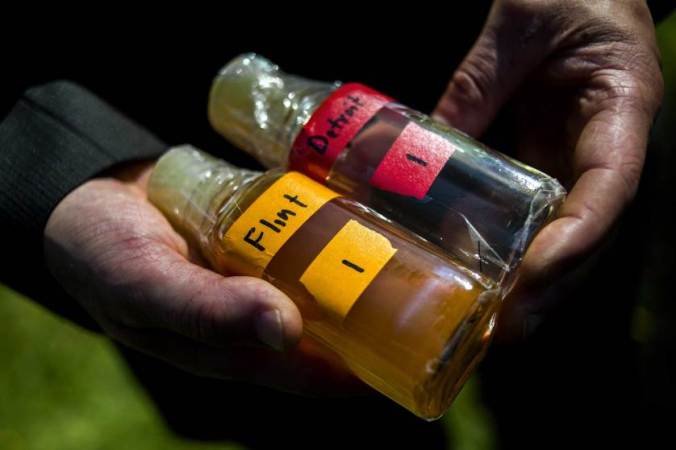
Virginia Tech professor Marc Edwards shows the difference in water between Detroit and Flint. Flint has faced a water contamination crisis since it switched water sources but did not treat the water to prevent lead, a potent neurotoxin, from leaching out of pipes. (Photo: Jake May, The Flint Journal, MLIVE.com)
July 29: Michigan Attorney Charges Government Officials for Flint Water Crisis (Flint, Michigan)
The Flint water crisis is a drinking water contamination issue in Flint, Michigan, United States that started in April 2014. After Flint changed its water source from treated Detroit Water and Sewerage Department water (which was sourced from Lake Huron as well as the Detroit River) to the Flint River (to which officials had failed to apply corrosion inhibitors), its drinking water had a series of problems that culminated with lead contamination, creating a serious public health danger. The Flint River water that was treated improperly caused lead from aging pipes to leach into the water supply, causing extremely elevated levels of the heavy metal neurotoxin. In Flint, between 6,000 and 12,000 children have been exposed to drinking water with high levels of lead and they may experience a range of serious health problems. Due to the change in water source, the percentage of Flint children with elevated blood-lead levels may have risen from about 2.5% in 2013 to as much as 5% in 2015. The water change is also a possible cause of an outbreak of Legionnaires’ disease in the county that has killed 10 people and affected another 77.
Several lawsuits have been filed against government officials on the issue, and several investigations have been opened. On January 5, 2016, the city was declared to be in a state of emergency by the Governor of Michigan, Rick Snyder, before President Barack Obama declared it as a federal state of emergency, authorizing additional help from the Federal Emergency Management Agency and the Department of Homeland Security less than two weeks later.
Governor Snyder issued an apology to citizens and promised to fix the problem, and then sent $28 million to Flint for supplies, medical care and infrastructure upgrades, and later budgeted an additional $30 million to Flint that will give water bill credits of 65% for residents and 20% for businesses. Another $165 million for lead pipe replacements and water bill reimbursements was approved by Governor Snyder on June 29, 2016.
Four government officials—one from the City of Flint, two from the Michigan Department of Environmental Quality (MDEQ), and one from the Environmental Protection Agency—resigned over the mishandling of the crisis, and one additional MDEQ staff member was fired. On July 29, 2016, Michigan Attorney General Bill Schuette charged six additional people with crimes in the crisis, three from the Michigan Department of Environmental Quality and three from the Michigan Department of Health and Human Services.
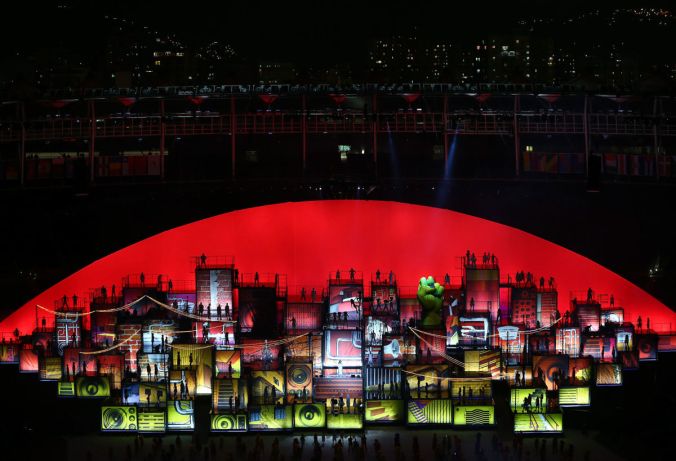
The opening ceremony of the Olympics featured a nod to the country’s favelas, the informally built neighborhoods where some fifteen million Brazilians live. (Photo: Ian Walton/ Getty)
August 5-21: Olympics in Brazil Exposes Gentrification and Inequality of Favelas (Rio de Janeiro, Brazil)
In 2008, as the city of Rio de Janeiro prepared its bid for the 2016 Olympics, special law-enforcement divisions, known as Police Pacification Units, started operating in the city’s favelas, sweeping out drug gangs and establishing permanent police presences in three dozen such neighborhoods for the first time ever. The hope was for law enforcement to forge peaceful ties with these communities and make the city as a whole safer. At first, it seemed to work. Rio’s homicide rate plunged.But, like so much else in Brazil lately, the program failed to live up to its promise.
Since 2009, when Rio won the bidding to hold the Games, more than twenty thousand families have been evicted from their homes in favelas to make way for arenas and infrastructural projects. Intent on projecting a modern image for the Olympics, Rio’s mayor Eduardo Paes has insisted that those people forced to relocate received indemnities, rent assistance, or new apartments in affordable-housing projects. He underplayed the fact that, according to the researcher Lucas Faulhaber, of the Federal University of Rio de Janeiro, many of these twenty thousand families ended up having to move as far as thirty miles from the communities where they had previously made their lives.
Other disappointments include the notorious case from 2013, when pacification officers in the massive favela of Rocinha tortured and disappeared a construction worker named Amarildo de Souza. An epileptic, Souza is believed to have died after being subjected to electric shocks during an interrogation. While twelve officers were convicted in connection with the case, the damage done to the community’s trust has been immense. Pacification officers have since largely reverted to a more traditional, quasi-military role in Rio’s favelas. Police in the city still kill someone almost every day.
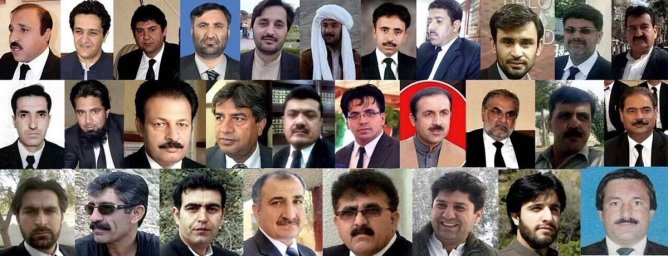
The faces of some of the more than 60 lawyers killed in Baluchistan’s capital of Quetta, Pakistan on August 8, 2016 (Photo: BBC Twitter via @Shaimaakhalil)
August 8: Terrorist Attack on Government Hospital Kills Entire Generation of Lawyers (Quetta, Pakistan)
Baluchistan is a place that desperately needs lawyers. It is Pakistan’s largest province by area and the home of a decades-old separatist insurgency, fueled by real grievances over neglect and lack of political representation. It is also increasingly the target of Sunni extremists, who bomb and kill its Shiite minorities. What leaders the province has are widely considered corrupt. Dozens of local journalists have been kidnapped in the past few years. It is nearly impossible for foreign reporters to enter Baluchistan. Lawyers are almost all that give the province a semblance of justice.
But on 8 August 2016, terrorists attacked the Government Hospital of Quetta in Pakistan with a suicide bombing and shooting. They killed 74 and injured more than 130 others. Most of the fatalities were lawyers who had assembled at the hospital where the body of Advocate Bilal Anwar Kasi, the president of Balochistan Bar Association, was brought after he was shot dead by an unknown gunman. Responsibility for the attack has been claimed by various Islamist groups like Jamaat-ul-Ahrar and the Islamic State. Between 70 and 94 people were killed and over 120 injured. 54 of those killed were lawyers.
A week earlier, another lawyer was fatally shot. In June, the principal of the province’s law college was, too. A generation of lawyers has been wiped out in Quetta, and it will leave Baluchistan, in more ways than one, lawless.
Quetta suffered another another attack on 24 October 2016, when three heavily armed terrorists carried out an attack on the Balochistan police training college. At least 61 cadets and were killed and more than 165 others were injured. The Islamic State of Iraq and the Levant – Khorasan Province claimed responsibility for the attack, and Pakistan-based Lashkar-e-Jhangvi claimed to have collaborated with them. According to Pakistani authorities, the assailants came from Afghanistan and were in contact with their handlers there while perpetrating the attack.
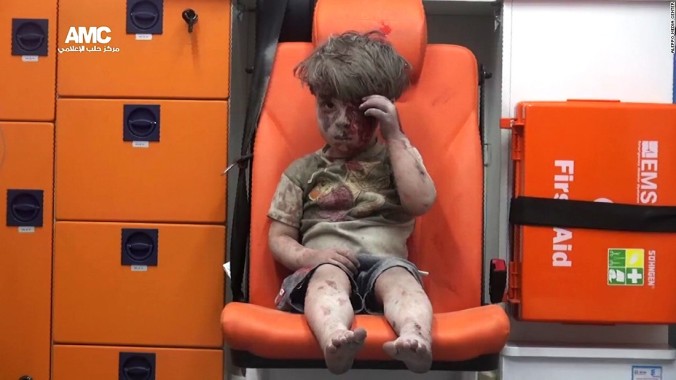
Footage shared online by the Aleppo Media Center is said to show a boy who was pulled from an airstrike on Aug. 17 in the Syrian city of Aleppo. (Photo: Aleppo Media Center)
August 17: The Boy in the Ambulance (Aleppo, Syria)
Sometimes you read something so eloquently written you just have to share it. The following excerpt comes from a TIME magazine article published on August 17.
Hitting the play button begins a scene that has played out in Syria thousands of times over the past five years. It’s dark and men are frantically yelling. A young child, later identified by media citing medical workers as five-year-old Omran Daqneesh, is passed between the arms of his rescuers from a building in Aleppo. He’s caked in dust. The left side of his face is smeared with blood.
He doesn’t make a sound.
In a moment of pure horror, the boy lifts his left hand to his face, runs his fingers through his hair and then back down the side of his face before dropping it down. He looks at the palm of his hand and, unsure what to do, turns it over and wipes it on the seat. In that moment, he was like every other kid, trying to get something off his hand.
He doesn’t make a sound.
That was [some] of the first 37 seconds of footage shared on Aug. 17 by the Aleppo Media Center, reportedly showing the immediate aftermath of an apparent Syrian government or Russian airstrike in a rebel-held neighborhood of the northern city, which for years has been a battleground between government and opposition forces. The footage and a picture of the boy were shared widely online in the hours that followed.
The photographer was identified by the Associated Press as Mahmoud Raslan, who said Omran was rescued from the building with three siblings and their parents. He told the AP that none had sustained life-threatening injuries.
The picture instantly recalls that of Alan Kurdi, the Syrian-Kurdish toddler who was found dead on the Turkish shoreline almost a year ago. Kurdi, in a red t-shirt and blue shorts, was face down. The world soon learned that he had died with his older brother and mother after their boat capsized overnight on the way to Greece. That picture went viral online during the historic influx of migrants and refugees into Europe, highlighting the thousands who perished trying to flee something bad for something better.
The images of Alan and Omran do have similarities: a young boy in a vulnerable position, alone. They each instantly became the face of their own tragedy, a response of sorts to the major global players who could push to end the madness: Kurdi, as a dead refugee, and Omran, as one of the thousands of Syrian children caught in an endless war.
But Omran is unique. It’s that he is alive. It’s that he is, to a point, aware. It’s his face. It cannot be unseen.
Read the entire article here.
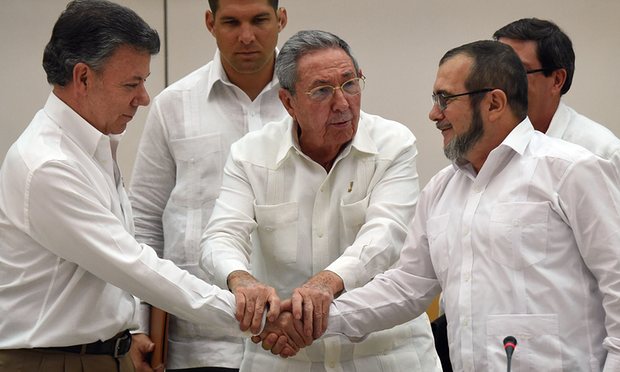
Colombian president Juan Manuel Santos (left) seals the deal in a handshake with the head of the Farc, Rodrigo Londono, in the presence of Cuban president Raul Castro. (Photo: AFP Photo/ Getty Images)
August 24: Colombia and FARC Final Agreement to End Conflict (Havana, Cuba & Cartagena, Colombia)
President Juan Manuel Santos and FARC announced a final agreement to end the conflict and build a lasting peace on August 24, 2016. But the peace agreement was rejected on 2 October 2016, after 50.21% of voters voted against the referendum and 49.79% voted in favor. On November 24, the Colombian government and FARC signed a revised peace deal. The revised agreement will be submitted to Congress for approval, bypassing the referendum process.
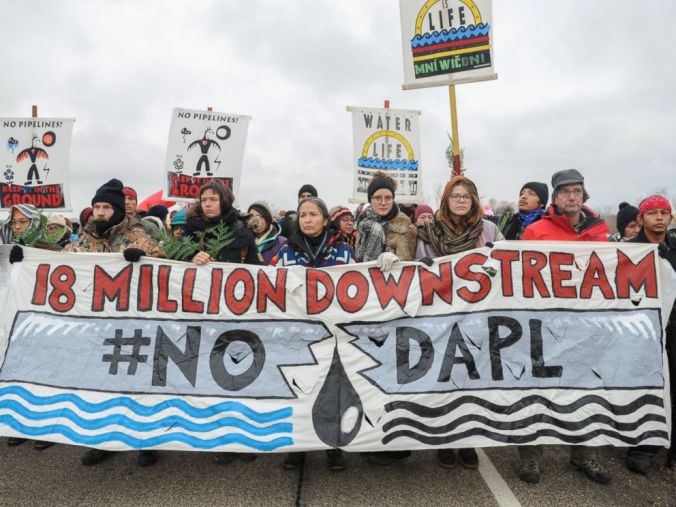
Protesters block highway 1806 in Mandan during a protest against plans to pass the Dakota Access pipeline near the Standing Rock Indian Reservation, North Dakota, Nov. 23, 2016. (Photo: Stephanie Keith / Reuters)
September 3: Dakota Access Pipeline Security Firm Uses Dogs and Pepper Spray On Peaceful Protesters (Standing Rock Reservation, North Dakota)
During the Labor Day weekend, on September 3, the Dakota Access Pipeline hired a private security firm and used bulldozers to dig up part of the pipeline route that contained possible Native graves and burial artifacts; it was subject to a pending injunction motion. The bulldozers arrived within a day after the tribe filed legal action. Energy Transfer bulldozers cut a two-mile (3200 m) long, 150-foot (45 m) wide path through the contested area.
When unarmed protesters crossed the perimeter fence to stop the bulldozers, the guards used pepper spray and guard dogs to attack the protesters. At least six protesters were treated for dog bites, and an estimated 30 were pepper-sprayed before the guards and their dogs left the scene in trucks. A woman that had taken part in the incident stated, “The cops watched the whole thing from up on the hills. It felt like they were trying to provoke us into being violent when we’re peaceful.” The incident was filmed by Amy Goodman and a crew from Democracy Now! Footage shows several people with dog bites and a dog with blood on its muzzle.
As of mid-October there had been over 140 arrests, including Standing Rock Tribal Chairman David Archambault II who was charged with disorderly conduct. Arrest warrants were also issued in Morton County for Democracy Now! journalist Amy Goodman as well as Green Party presidential candidate Jill Stein and her running mate Ajamu Baraka on misdemeanor counts of criminal trespass and criminal mischief. Some protesters arrested for misdemeanors and taken to the Morton County jail have reported what they considered harsh and unusual treatment.
While the protests have drawn international attention and have been said to be “reshaping the national conversation for any environmental project that would cross the Native American land”, there was limited mainstream media coverage of the events in the United States until early September. The struggle continues. Learn more about the Dakota Access Pipeline, including how you can help.

October 14: President Obama Further Normalizes Relations with Cuba (Washington, D.C. & Havana, Cuba)
On October 14, President Obama moved to cement his administration’s historic opening with Cuba by issuing a sweeping directive that will last beyond his presidency, setting forth a new United States policy to lift the Cold War trade embargo and end a half-century of clandestine plotting against Cuba’s government. The action formalizes the shift toward normalization that the president unveiled nearly two years ago with the announcement that he and President Raúl Castro of Cuba had secretly agreed to repair their countries’ relationship. President Obama also made what aides said were likely his final major modifications to loosen United States sanctions on Cuba before leaving office, including lifting the $100 limit on bringing Cuban rum and cigars into the United States.
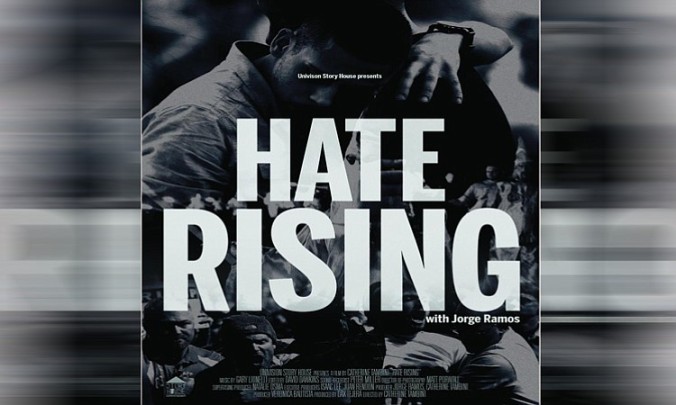
October 18: Hate Rising – Univision Journalists Jorge Ramos’ Documentary Explores the State of Hate in America (United States)
A new film, “Hate Rising,” reported by Fusion and Univision anchor Jorge Ramos, shows the astonishing and very concerning rise of hate in America. From the Ku Klux Klan to the so-called alt-right movement, white supremacist groups. They are a small, but growing radical segment of the white non-hispanic population that feels threatened by the demographic changes in the country and is resisting the possibility of becoming a minority. The Southern Poverty Law Center (SPLC) estimates that the number of radical groups operating in the U.S. has grown from 784 in 2014 to 892 in 2015; and organizations affiliated with the Ku Klux Klan from 72 to 190. The SPLC has dubbed the mainstreaming of such hate groups “the Trump Effect“, due in part rhetoric Trump used during the election cycle.
Throughout the documentary, Ramos explores the mainstreaming of these ideas on TV and social media, and in our communities and classrooms. Over four months, he traveled to small towns across the nation speaking with neo-Nazis, members of the KKK, and the alt-right. He also heard stories of Muslims and Latinos who have been the victims of hate crimes. Last year, Ramos himself, a Mexican immigrant who is also an American citizen, experienced the anger and intolerance simmering at the surface of our society when a Trump supporter told him to “get out of my country.”
“Hate Rising” is directed by Catherine Tambini and produced in conjunction with Fusion and Univision Story House.

October 24: The New York Times Names All the People and Things Trump Has Insulted on Twitter During His Campaign (New York, NY)
Throughout the 2016 election, Donald Trump weaponized his Twitter account to malign his opponents and give oxygen to conspiracy theories and hate groups around the country. The Republican nominee has done so with such frequency that on many occasions his social media outbursts went well beyond his 5.9 million followers to dominate entire news cycles for days on end.
The New York Times cataloged every insult to appear on Trump’s Twitter account since he launched his campaign in June 2015. On October 24, the paper devoted two full pages of its print edition to showcasing its impressive work. The shortlist includes: President Obama, all of the 2016 presidential nominees, a disabled journalists, FOX News’ Megyn Kelly, the mainstream media, women, blacks, Mexicans, a Gold Star Family, military generals and veterans. Ironically, the presidential nominee has showered praise on foreign dictators and authoritarians such as Vladimir Putin (Russia), Kim Jung-un (North Korea), and Bashar al-Assad (Syria), Muammar Gaddafi (deceased; Libya), and Saddam Hussein (deceased; Iraq).
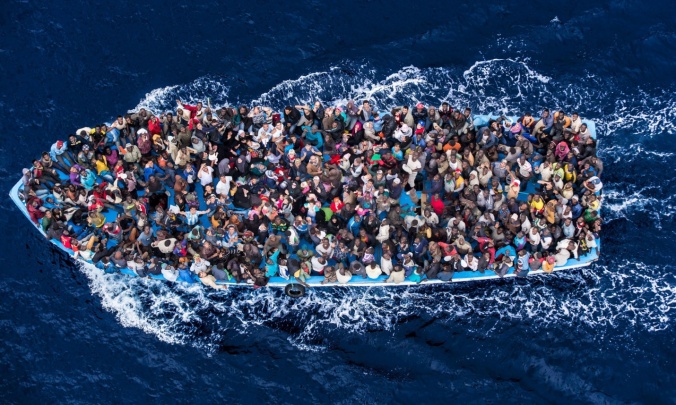
The majority of migrant border-related deaths since January have occurred in the Mediterranean sea. According to estimates by the International Organisation for Migration (IOM) and UNHCR, 3,800 people have died since the beginning of the year trying to reach European territory by crossing the Mediterranean. This figure represents 75% of the total migration-related deaths in the world this year. (Photo: Massimo Sestini/ eyevine).
October 26: Mediterranean Migrant Deaths Reach Record Level in 2016
“We can confirm that at least 3,800 people have been reported dead or missing in the Mediterranean Sea so far this year, making the death toll in 2016 the highest ever recorded,” UN refugee agency spokesman William Spindler tweeted, as the figures passed last year’s mark of 3,771. The sombre milestone was reached despite a significant decline in migrant crossing this year compared to 2015.
Last year, more than a million people reached Europe via the Mediterranean, but crossings so far this year remain below 330,000. Numbers began dropping dramatically following a March deal between Turkey and the European Union to stem the migrant tide on the Greek islands. The most dangerous route has been the Central Mediterranean route between Libya and Italy, where the United Nations has recorded one death for every 47 arrivals this year. For the much shorter Turkey to Greece route, the likelihood of perishing was one in 88, UNHCR said. Last year the rate was roughly one in 289 arrivals.
The agency explained that death rates have spiked despite nearly a two-thirds drop in total migration because smugglers are “often using lower quality vessels — flimsy inflatable rafts that do not last the journey.” Smugglers also appear to be packing increasing numbers of people on boats, possibly to drive up profits, UNHCR further said. Shipwrecks involving more people have reduced rescue rates, the agency added, also noting that several disasters this year have been linked to bad weather.

Juan Manuel Santos’ photo in Nobel’s Garden, Nobel Peace Center. The Norwegian Nobel Committee decided to award the Nobel Peace Prize for 2016 to Colombian President Juan Manuel Santos “for his resolute efforts to bring the country’s more than 50-year-long civil war to an end, a war that has cost the lives of at least 220,000 Colombians and displaced close to six million people”. (Photo: The Norwegian Nobel Committee)
November 7: Colombian President Juan Manuel Santos Awarded Nobel Peace Prize (Oslo, Norway)
The president of Colombia was awarded the Nobel Peace Prize on November 7 for pursuing a deal to end 52 years of conflict with FARC, a leftist rebel group, the longest-running war in the Americas, just five days after Colombians rejected the agreement in a shocking referendum result. Mr. Santos dedicated the prize to his fellow Colombians, especially the victims of the long conflict, and called on the opponents of the peace deal to join him in securing an end to hostilities.

President-Elect Donald J. Trump with his family on November 8, 2016 after election results are announced by the media.(Photo: AP)
November 8: Donald J. Trump Wins Election to Become 45th President (United States)
Donald John Trump was elected the 45th president of the United States on Tuesday in a stunning culmination of an explosive, populist and polarizing campaign that took relentless aim at the institutions and long-held ideals of American democracy. The surprise outcome, defying late polls that showed Hillary Clinton with a modest but persistent edge, threatened convulsions throughout the country and the world, where skeptics had watched with alarm as Mr. Trump’s unvarnished overtures and racists demagoguery to disillusioned voters took hold.
The triumph for Mr. Trump, 70, a real estate developer-turned-reality television star with no government experience, was a powerful rejection of the establishment forces that had assembled against him, from the world of business to government, and the consensus they had forged on everything from trade to immigration.
Democrat Presidential Nominee Hillary Clinton received over 2 million more votes than Trump, earning the majority of the popular vote. Protests in the form of school walkouts, marches, and boycotts erupted across the country, with protesters chanting #NotMyPresident and tweeting #LoveTrumpHates.
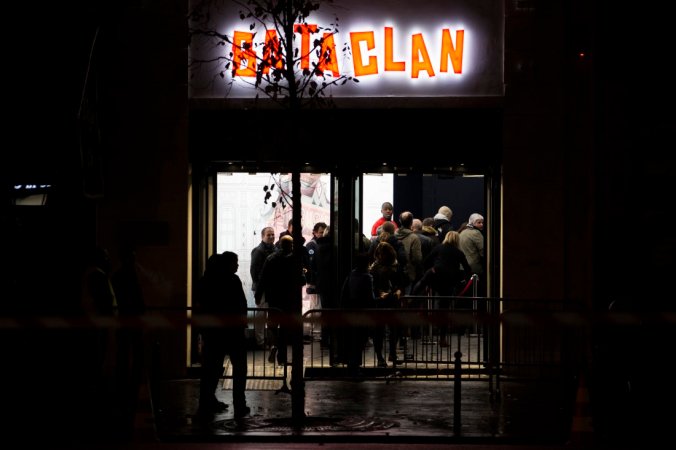
People enter the Bataclan concert hall in Paris, on Nov. 12, 2016. A concert by British pop legend Sting is marking the reopening of the Paris’ Bataclan. (Photo: Kamil Zihnioglu / AP)
November 12: Bataclan Night Reopens with Sting Taking Center Stage (Paris, France)
Sting reopened the Bataclan a year after 90 people were massacred by ISIS gunmen at a packed rock concert. The English singer-songwriter and former Police frontman is staging the first gig at the 150-year-old venue since the deadly terror attack that took place on 13 November last year.
Greeted on the stage to loud cheers, Sting, 65, paid tribute to those who were killed in the venue and called for the audience to stage a minute’s silence in their honor.
Speaking in French, the musician said: “We’ve got two important things to do tonight. First, to remember and honour those who lost their lives in the attacks a year ago, and to celebrate the life and the music of this historic venue: “So before we begin, I would like to ask that we observe one minute of silence … We shall not forget them.” After the minute of silence, the star launched into a string of hits, beginning with his song ‘Fragile’, singing: “Nothing comes from violence and nothing will”.

Members of the neo-Nazi National Socialist Movement hold flags as they salute and shout “Sieg Heil” during a rally in front of the Statehouse in Trenton, N.J. (Photo: Mel Evans/ AP)
November 14: Hate Crimes On Rise Since Trump Elected President (United States)
Racist incidents have been on the rise across the United States since Donald Trump was elected president. Details of disturbing incidents have been popping up on social media since Tuesday and some experts say it’s the biggest rise in these types of events since right after the 2001 terrorist attacks.
“Since the election, we’ve seen a big uptick in incidents of vandalism, threats, intimidation spurred by the rhetoric surrounding Mr. Trump’s election,” Richard Cohen, president of the Southern Poverty Law Center. “The white supremacists out there are celebrating his victory and many are feeling their oats.” The SPLC has recorded more than 200 complaints since the election. Several news sources, including SLATE have compiled an incomplete list of racist incidents since Trump was elected on November 8, 2016.
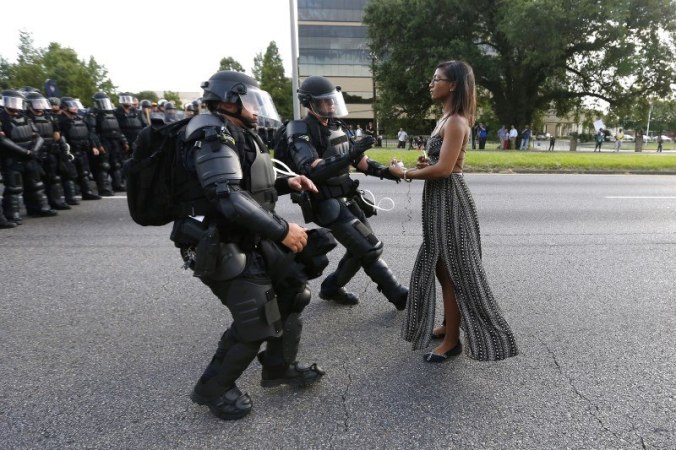
Ieshia Evans, a nurse from Brooklyn, stands alone calmly while facing heavily-armed police officers who rush in to arrest her Saturday outside the Baton Rouge Police Department. Evans traveled to Louisiana to protest against the killing of Alton Sterling. (Photo: Jonathan Bachman/ Reuters)
November 16: New York Times Reports on Lack of Accountability in Police-Involved Deaths of Blacks (United States)
According to The New York Times, there have been 13 cases that have fueled outrage, heightened racial tensions and instigated protests around the nation. In some of the cases, the police offered an explanation for their actions, but raw videos led many to conclude that the police actions were unjustified.
So far, officers have been indicted or charged in seven cases. In four cases,
grand juries declined to bring charges. Officers in all 13 cases were placed on administrative leave or reassigned — a routine step that is not a form of discipline, said Christopher Dunn, the associate legal director at the New York Civil Liberties Union. Criminal charges have been brought against officers in fewer than half of the cases. Indictments are usually handed up by local grand juries, which make the decision in secret.
Courts have given leeway to the police on using deadly physical force if officers reasonably feel their lives are in danger, and juries are often reluctant to convict police officers, Mr. Dunn said. Prosecutors may feel pressure not to charge officers because they work with and rely on the police daily, and at times, facts can be distorted or withheld by the police, leaving prosecutors with incomplete or wrong information, he said. However, for victims’ families, “some action against the officer is very important to them, whether that’s criminal prosecution or dismissal from the department,” Mr. Dunn said.
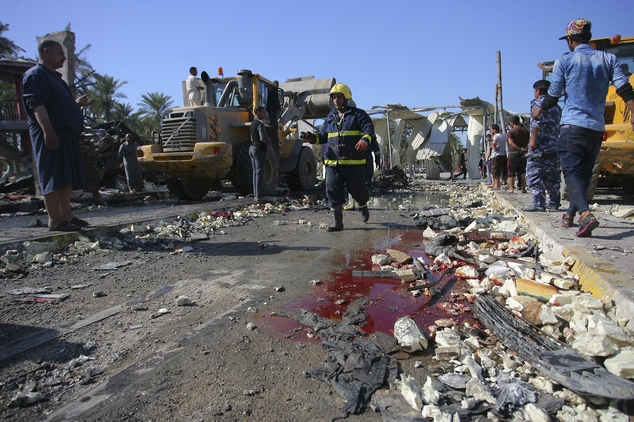
Civilians and security forces gather at the scene of a suicide bomb attack in Hillah, about 60 miles (95 kilometers) south of Baghdad, Iraq, Sunday, March 6, 2016. A suicide bomber on Sunday rammed his explosives-laden fuel truck into a security checkpoint south of Baghdad, killing and wounding dozens, officials said, the latest episode in an uptick in violence in the war-ravaged country. (AP Photo/ Anmar Khalil)
November 24: Hillah Suicide Truck Bombing (Hillah, Iraq)
A suicide truck bombing occurred on 24 November 2016 when a truck bomb exploded at a petrol station in Hillah, some 62 miles away from southern Baghdad killing at least 100 people and many other injured while Shia pilgrims were on route back to Iran after Arba’een Pilgrimage-2016. Besides, Iranians, there were people from Basra and Nasiriyah as well.
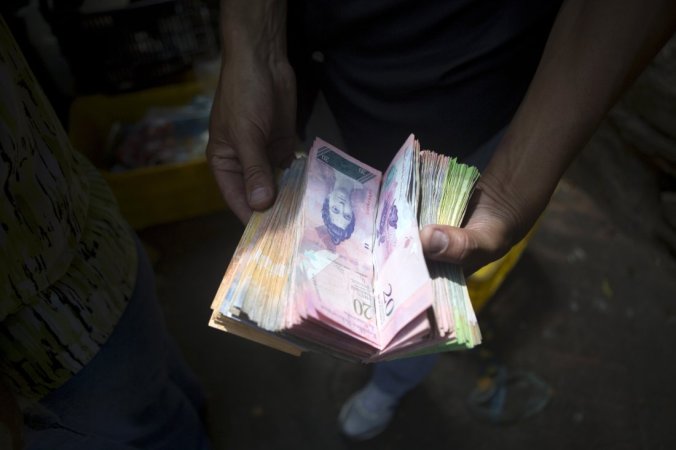
A man displays bolivar notes that he carries to pay for goods at a street market in Caracas on Oct. 1, 2015. (Marco Bello /Reuters)
November 25: Venezuela’s Economy Continues to Collapse (Venezuela)
On November 25, The New York Times reported that hungry Venezuelans are fleeing on boats to escape the economic collapse. Well over 150,000 Venezuelans have fled the country in the last year alone, the highest in more than a decade, according to scholars studying the exodus. But perhaps most startling are the Venezuelans now fleeing by sea, an image so symbolic of the perilous journeys to escape Cuba or Haiti — but not oil-rich Venezuela.
On November 28, the Washington Post reported inflation is expected to reach 720 percent this year and the biggest bill — 100 bolivars — is worth about 5 U.S. cents on the black market. The currency has dropped dramatically in value as Venezuela’s oil-based economy has cratered and the government has frantically printed more money. Prices, meanwhile, are soaring. So Venezuelans must handle huge volumes of cash — so much that the bills don’t always fit in a standard wallet — with many people packing wads of currency in handbags, money belts or backpacks.
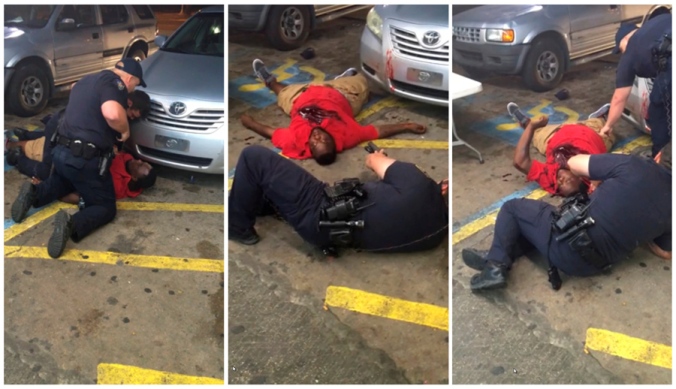
Still images from video show Alton Sterling as he is shot dead by police during an incident captured on the mobile phone camera of shop owner Abdullah Muflahi in Baton Rouge, Louisiana, July 5, 2016. (Photo: Handout / Reuters)
November 30: Native American and Blacks Are Disproportionately Killed by Police (United States)
The year isn’t over yet, and police have already killed at least 977 people — many of whom were unarmed, mentally ill, and people of color. This number comes from The Counted, The Guardian database of police-involved shooting in the United States. Two other reliable databases have slightly different numbers. The Killed by Police database counts 1056 people who have died at the hands of police so far this year. The Washington Post’s database, Fatal Force, reports that 878 people have been shot and killed by cops. All three databases operate in virtual real-time and generally update the information pursuant to their methodologies as well as their verification and publication protocols. Ironically, the existence of these three databases stands as a constant reminder that police killings were not tracked with any consistency in the past.
Going by the The Counted’s numbers, Native Americans (7.6%) and Blacks (5.84%) are being killed at the highest rates in the United States. There have been 233 black people killed by police so far this year, at a rate of 5.84 deaths per million. February and March were the deadliest months this year, with 100 people killed by police in each month. Police have killed 80 people this month – 27 were of unknown ethnicities, 26 were white, 14 were black, and 12 were Hispanic/ Latino.
Notable Deaths Since June 2016 – An Incomplete List
The names are listed and the slideshow images appear in the order of each person’s passing. Click the (text) name to be redirected to the respective obituary.
This slideshow requires JavaScript.
Muhammad Ali, 74 (1/17/1942 – 6/3/2016)
Alvin Toffler, 87 (10/4/1928 – 6/27/2016)
Pat Summitt, 64 (6/14/1952 – 6/28/2016)
Elie Wiesel, 87 (9/30/1928 – 7/2/2016)
Gene Wilder, 83 (6/11/1933 – 8/29/2016)
José D. Fernández, 24 (7/31/1992 – 9/25/2016)
Shimon Peres, 93 (8/2/1923 – 9/28/2016)
E. Barrett Prettyman, Jr., 91 (6/1/1925 – 11/4/2016)
Ralph J. Cicerone, 73 (5/2/1943 – 11/5/2016)
Janet Reno, 78 (7/21/1938 – 11/7/2016)
Yaffa Eliach, 79 (5/31/1937 – 11/8/2016)
Greg Ballard, 61 (1/29/1955 – 11/9/2016)
Gwen Ifill, 61 (9/29/1955 – 11/14/2016)
Sharon Jones, 60 (5/4/1956 – 11/18/2016)
Theresa Manuel, 90 (1/7/1926 – 11/21/2016)
Fidel Castro, 91 (8/13/1926 – 11/25/2016)
Click here for a comprehensive list of of all 2016 deaths

 1. Unidos Por Puerto Rico (United For Puerto Rico) is an organization created by Gov. Ricardo Rosselló’s wife Beatriz Rosselló in collaboration with the private sector, is providing a way for anyone to help victims in Puerto Rico. The initiative aims to provide aid and support to those affected in Puerto Rico by the impact of Hurricane Irma and Hurricane María. The organization also has a list of needed construction materials and other supplies for those who would rather donate goods instead of money. Some of the pressing supply needs in Puerto Rico include bottled water, baby wipes, diapers, baby formula, pain relief medication for adults and children, canned milk, mosquito repellant, stomach relief and diarrhea medication, first-aid kits, blankets, and pillows. People can also donate through One America Appeal, a fundraising campaign originally launched by all five living former U.S. Presidents. The campaign lets donors contribute funds to Unidos Por Puerto Rico and the Fund for the Virgin Islands, a non-profit organization that was established 25 years ago by the Community Foundation of the Virgin Islands for relief efforts.
1. Unidos Por Puerto Rico (United For Puerto Rico) is an organization created by Gov. Ricardo Rosselló’s wife Beatriz Rosselló in collaboration with the private sector, is providing a way for anyone to help victims in Puerto Rico. The initiative aims to provide aid and support to those affected in Puerto Rico by the impact of Hurricane Irma and Hurricane María. The organization also has a list of needed construction materials and other supplies for those who would rather donate goods instead of money. Some of the pressing supply needs in Puerto Rico include bottled water, baby wipes, diapers, baby formula, pain relief medication for adults and children, canned milk, mosquito repellant, stomach relief and diarrhea medication, first-aid kits, blankets, and pillows. People can also donate through One America Appeal, a fundraising campaign originally launched by all five living former U.S. Presidents. The campaign lets donors contribute funds to Unidos Por Puerto Rico and the Fund for the Virgin Islands, a non-profit organization that was established 25 years ago by the Community Foundation of the Virgin Islands for relief efforts. 2. The Islamic Relief USA (IRUSA) is a nonprofit humanitarian agency and member of the Islamic Relief Worldwide group of organizations. IRUSA was founded in California in 1993. In addition to international relief and development initiatives, Islamic Relief USA also sponsors and funds domestic projects ranging from emergency disaster responses to assisting the American homeless population and supporting those who cannot afford basic healthcare. In 2005, IRUSA aided the victims of Hurricane Katrina by providing over $2 million in assistance and sending field workers to distribute aid and assess the needs of the victims. Partnering with IRUSA for the 2006 Yogyakarta earthquake that struck Indonesia, The Church of Jesus Christ of Latter-day Saints donated $1.6 million worth of emergency supplies. After Hurricane Sandy in 2012, IRUSA staff and volunteers worked at shelters in New Jersey to house displaced residents. In 2014, IRUSA’s disaster response team assisted Alabama residents affected by tornadoes. In 2015, IRUSA gave $50,000 to assist Detroit residents whose water had been turned off due to difficulty paying their bills.
2. The Islamic Relief USA (IRUSA) is a nonprofit humanitarian agency and member of the Islamic Relief Worldwide group of organizations. IRUSA was founded in California in 1993. In addition to international relief and development initiatives, Islamic Relief USA also sponsors and funds domestic projects ranging from emergency disaster responses to assisting the American homeless population and supporting those who cannot afford basic healthcare. In 2005, IRUSA aided the victims of Hurricane Katrina by providing over $2 million in assistance and sending field workers to distribute aid and assess the needs of the victims. Partnering with IRUSA for the 2006 Yogyakarta earthquake that struck Indonesia, The Church of Jesus Christ of Latter-day Saints donated $1.6 million worth of emergency supplies. After Hurricane Sandy in 2012, IRUSA staff and volunteers worked at shelters in New Jersey to house displaced residents. In 2014, IRUSA’s disaster response team assisted Alabama residents affected by tornadoes. In 2015, IRUSA gave $50,000 to assist Detroit residents whose water had been turned off due to difficulty paying their bills.  3. The International Organization for Migration is an intergovernmental organization that provides services and advice concerning migration to governments and migrants, including internally displaced persons, refugees, and migrant workers. In September 2016, IOM became a related organization of the United Nations. It was initially established in 1951 as the Intergovernmental Committee for European Migration (ICEM) to help resettle people displaced by World War II. It is the principal intergovernmental organization in the field of migration, with 166 member states and eight observer states. IOM’s stated mission is to promote humane and orderly migration by providing services and advice to governments and migrants. IOM works to help ensure the orderly and humane management of migration, to promote international cooperation on migration issues, to assist in the search for practical solutions to migration problems and to provide humanitarian assistance to migrants in need, be they refugees, displaced persons or other uprooted people.
3. The International Organization for Migration is an intergovernmental organization that provides services and advice concerning migration to governments and migrants, including internally displaced persons, refugees, and migrant workers. In September 2016, IOM became a related organization of the United Nations. It was initially established in 1951 as the Intergovernmental Committee for European Migration (ICEM) to help resettle people displaced by World War II. It is the principal intergovernmental organization in the field of migration, with 166 member states and eight observer states. IOM’s stated mission is to promote humane and orderly migration by providing services and advice to governments and migrants. IOM works to help ensure the orderly and humane management of migration, to promote international cooperation on migration issues, to assist in the search for practical solutions to migration problems and to provide humanitarian assistance to migrants in need, be they refugees, displaced persons or other uprooted people.  4. The Global Fund for Women is a non-profit foundation funding women’s human rights initiatives. It was founded in 1987 by New Zealander Anne Firth Murray, and co-founded by Frances Kissling and Laura Lederer to fund women’s initiatives around the world. The Global Fund for Women is an international grantmaking foundation that supports groups working to advance the human rights of women and girls. They advocate for and defend women’s human rights by making grants to support women’s groups around the world. Funds that support the Global Fund for Women are raised from a variety of sources and are awarded to women-led organizations that promote economic security, health, safety, education and leadership of women and girls. The Global Fund for Women accepts grant proposals in any language and in any format. It also publishes “Impact Reports” which focus on specific issues impacting women and girls. The Global Fund for Women headquartered in San Francisco, California. Since 1988, the foundation has awarded over $100 million in grants to over 4,000 organizations supporting progressive women’s rights in over 170 countries.
4. The Global Fund for Women is a non-profit foundation funding women’s human rights initiatives. It was founded in 1987 by New Zealander Anne Firth Murray, and co-founded by Frances Kissling and Laura Lederer to fund women’s initiatives around the world. The Global Fund for Women is an international grantmaking foundation that supports groups working to advance the human rights of women and girls. They advocate for and defend women’s human rights by making grants to support women’s groups around the world. Funds that support the Global Fund for Women are raised from a variety of sources and are awarded to women-led organizations that promote economic security, health, safety, education and leadership of women and girls. The Global Fund for Women accepts grant proposals in any language and in any format. It also publishes “Impact Reports” which focus on specific issues impacting women and girls. The Global Fund for Women headquartered in San Francisco, California. Since 1988, the foundation has awarded over $100 million in grants to over 4,000 organizations supporting progressive women’s rights in over 170 countries. 5. FACE Africa is a nonprofit organization founded by Liberian national Saran Kaba Jones in 2009 that provides access to clean and safe drinking water for rural communities in Liberia using an innovative social enterprise model to fund water projects. In 2003, Liberia emerged from a long and devastating civil war that took the lives of hundreds of thousands of people and displaced millions. The country suffered massive destruction and the very fabric of society was torn apart; infrastructures were in ruins – roads, buildings, health clinics, communications networks, schools, farms and factories were almost totally destroyed. With an 80% unemployment rate; extreme poverty with average earnings of $1 a day; no electricity; no running water or sewage system; and an inadequate education system, the country had enormous needs.
5. FACE Africa is a nonprofit organization founded by Liberian national Saran Kaba Jones in 2009 that provides access to clean and safe drinking water for rural communities in Liberia using an innovative social enterprise model to fund water projects. In 2003, Liberia emerged from a long and devastating civil war that took the lives of hundreds of thousands of people and displaced millions. The country suffered massive destruction and the very fabric of society was torn apart; infrastructures were in ruins – roads, buildings, health clinics, communications networks, schools, farms and factories were almost totally destroyed. With an 80% unemployment rate; extreme poverty with average earnings of $1 a day; no electricity; no running water or sewage system; and an inadequate education system, the country had enormous needs. 6. Charity: Water is a non-profit organization that provides clean and safe drinking water to people in developing nations. The organization was founded in 2006 and has benefitted over 7.3 million people. Based in New York City, Charity: Water uses both mainstream and social media platforms to raise awareness, including annual galas and events arranged via Twitter. The initiative, which has received donations from 300,000 individuals, provides GPS coordinates and photos of the wells it builds. The organization has 70 full-time staff members, 10 interns and more than 800 volunteers. 100% of its public donations are used to fund clean water projects, as its operating costs are funded by private donors, foundations and sponsors. Charity: Water has raised more than $252 million for more than 24,537 water projects in 24 countries, including Ethiopia, Rwanda, and Malawi. As of May 2017, Charity Navigator rates the organization among their highest-rated charities, with a full 4 out of 4 stars, and an overall rating of 92.29 out of 100 – with an ‘Accountability & Transparency’ score of a maximum of 100.
6. Charity: Water is a non-profit organization that provides clean and safe drinking water to people in developing nations. The organization was founded in 2006 and has benefitted over 7.3 million people. Based in New York City, Charity: Water uses both mainstream and social media platforms to raise awareness, including annual galas and events arranged via Twitter. The initiative, which has received donations from 300,000 individuals, provides GPS coordinates and photos of the wells it builds. The organization has 70 full-time staff members, 10 interns and more than 800 volunteers. 100% of its public donations are used to fund clean water projects, as its operating costs are funded by private donors, foundations and sponsors. Charity: Water has raised more than $252 million for more than 24,537 water projects in 24 countries, including Ethiopia, Rwanda, and Malawi. As of May 2017, Charity Navigator rates the organization among their highest-rated charities, with a full 4 out of 4 stars, and an overall rating of 92.29 out of 100 – with an ‘Accountability & Transparency’ score of a maximum of 100. 7. Re-Plate is a nonprofit and technological innovation that matches surplus food from local businesses to communities in need. A technology company at its core, Re-Plate has developed an app through which companies (mostly tech ones so far) can alert the organization when they have food leftover from meetings or company provided meals. A driver is dispatched to safely collect the often gourmet meals and deliver them to willing shelters or pantries, or sometimes even provides them directly to those living on the streets. The organization was founded in Berkerly, California on January 1, 2016 by Maen Mahfoud. Mahfoud grew up in Syria and saw the effects of poor access to food nearly every day. When he immigrated to California, he was surprised to find similar disparities within San Francisco. Mahfoud believes food is a great way to bridge the gap between income levels and become more aware of problems in our communities. To datem Re-Plate has rescued close to a million of high-quality meals for low-income communities in the San Francisco Bay Area. It has created 833,000 meals, saved 277,000 gallons of water, and diverted 13,770 pounds of CO2 from the environment. By 2020 Re-Plate projects it will recover 30M pounds of food a year.
7. Re-Plate is a nonprofit and technological innovation that matches surplus food from local businesses to communities in need. A technology company at its core, Re-Plate has developed an app through which companies (mostly tech ones so far) can alert the organization when they have food leftover from meetings or company provided meals. A driver is dispatched to safely collect the often gourmet meals and deliver them to willing shelters or pantries, or sometimes even provides them directly to those living on the streets. The organization was founded in Berkerly, California on January 1, 2016 by Maen Mahfoud. Mahfoud grew up in Syria and saw the effects of poor access to food nearly every day. When he immigrated to California, he was surprised to find similar disparities within San Francisco. Mahfoud believes food is a great way to bridge the gap between income levels and become more aware of problems in our communities. To datem Re-Plate has rescued close to a million of high-quality meals for low-income communities in the San Francisco Bay Area. It has created 833,000 meals, saved 277,000 gallons of water, and diverted 13,770 pounds of CO2 from the environment. By 2020 Re-Plate projects it will recover 30M pounds of food a year. 8. Plant-for-the-Planet is a children’s initiative that aims to raise awareness amongst children and adults about the issues of climate change and global justice. The initiative also works to plant trees, and considers this to be both a practical and symbolic action in efforts to reduce the effect of climate change. In 2011, it reached a goal of planting a million trees. The idea for Plant-for-the-Planet was first developed in Germany in 2007 by Felix Finkbeiner, a nine-year old boy, who was instructed by a teacher to prepare a school report on the issue of climate change. While conducting his research, Finkbeiner came across the story of Wangari Maathai, the Nobel Peace Prize Laureate from Kenya who had worked to plant over 30 million trees across Africa as part of her ‘Green Belt Movement‘. At the end of his presentation, Finkbeiner shared the idea that the children of the world could plant 1 million trees in every country on Earth. On the 28th of March 2007 the first tree was planted at Finkbeiner’s school, thus marking the official launch of Plant-for-the-Planet. Students in Bavaria and across Germany also got involved and continued to plant trees under the initiatives name. Colin Mummert helped spearhead the Munich campaign for Plant-for-the-Planet. After one year 150,000 trees were planted and, in 2008, Finkbeiner was able to reach a larger audience becasue he was elected to the UNEP children’s board during the International UNEP Children’s Conference in Norway.
8. Plant-for-the-Planet is a children’s initiative that aims to raise awareness amongst children and adults about the issues of climate change and global justice. The initiative also works to plant trees, and considers this to be both a practical and symbolic action in efforts to reduce the effect of climate change. In 2011, it reached a goal of planting a million trees. The idea for Plant-for-the-Planet was first developed in Germany in 2007 by Felix Finkbeiner, a nine-year old boy, who was instructed by a teacher to prepare a school report on the issue of climate change. While conducting his research, Finkbeiner came across the story of Wangari Maathai, the Nobel Peace Prize Laureate from Kenya who had worked to plant over 30 million trees across Africa as part of her ‘Green Belt Movement‘. At the end of his presentation, Finkbeiner shared the idea that the children of the world could plant 1 million trees in every country on Earth. On the 28th of March 2007 the first tree was planted at Finkbeiner’s school, thus marking the official launch of Plant-for-the-Planet. Students in Bavaria and across Germany also got involved and continued to plant trees under the initiatives name. Colin Mummert helped spearhead the Munich campaign for Plant-for-the-Planet. After one year 150,000 trees were planted and, in 2008, Finkbeiner was able to reach a larger audience becasue he was elected to the UNEP children’s board during the International UNEP Children’s Conference in Norway. 9. Too Young to Wed is a nonprofit organization that traces its official launch back to October 11, 2012 – the first International Day of the Girl Child. Dignitaries from around the world gathered at the United Nations in New York City that day and, surrounded by photographs of child brides as young as 5, pledged to do whatever it took to end child marriage. But the campaign’s roots stretch back another decade, to Herat, Afghanistan, where visual journalist Stephanie Sinclair was working on a story about girls and women who set themselves on fire. There, she discovered a disturbing pattern among the scarred patients in the hospital’s burn ward: Most of them had been forced into marriage as children. Horrified to learn that child marriage was common in communities throughout the world, Sinclair dedicated the next 10 years of her life to documenting the practice in the hopes of inspiring change. Sinclair joined forces with the UN Population Fund (UNFPA) to create a transmedia campaign aimed at raising awareness of the problem, supporting girls who are already married and ultimately halting the practice that affects one girl every two seconds—or an estimated 142 million more girls over the next decade. In addition, child marriage is inextricably linked to many of the world’s ills: child and maternal mortality, poverty, gender inequality, and the spread of HIV/AIDS—and ending the practice will help stamp out many of these problems.
9. Too Young to Wed is a nonprofit organization that traces its official launch back to October 11, 2012 – the first International Day of the Girl Child. Dignitaries from around the world gathered at the United Nations in New York City that day and, surrounded by photographs of child brides as young as 5, pledged to do whatever it took to end child marriage. But the campaign’s roots stretch back another decade, to Herat, Afghanistan, where visual journalist Stephanie Sinclair was working on a story about girls and women who set themselves on fire. There, she discovered a disturbing pattern among the scarred patients in the hospital’s burn ward: Most of them had been forced into marriage as children. Horrified to learn that child marriage was common in communities throughout the world, Sinclair dedicated the next 10 years of her life to documenting the practice in the hopes of inspiring change. Sinclair joined forces with the UN Population Fund (UNFPA) to create a transmedia campaign aimed at raising awareness of the problem, supporting girls who are already married and ultimately halting the practice that affects one girl every two seconds—or an estimated 142 million more girls over the next decade. In addition, child marriage is inextricably linked to many of the world’s ills: child and maternal mortality, poverty, gender inequality, and the spread of HIV/AIDS—and ending the practice will help stamp out many of these problems.  10. Life After Hate, Inc. (LAH) is U.S. nonprofit created in 2011 by former members of the American violent far-right extremist movement. Through powerful stories of transformation and unique insight gleaned from decades of experience, LAH seeks to inspire, educate, guide, and counsel. Whether working with individuals who wish to leave a life of hate and violence or by helping organizations (community, educational, civic, government, etc.) grapple with the causes of intolerance and racism, Life After Hate works to counter the seeds of hate we once planted. Through personal experience and highly unique skill sets, the organization has developed a sophisticated understanding about what draws individuals to extremist groups and, equally important, why they leave. Inspired by the organization’s work, Former San Francisco Quarterback Colin Kaepernnick donated $50,000 to Life After Hate in May 2017.
10. Life After Hate, Inc. (LAH) is U.S. nonprofit created in 2011 by former members of the American violent far-right extremist movement. Through powerful stories of transformation and unique insight gleaned from decades of experience, LAH seeks to inspire, educate, guide, and counsel. Whether working with individuals who wish to leave a life of hate and violence or by helping organizations (community, educational, civic, government, etc.) grapple with the causes of intolerance and racism, Life After Hate works to counter the seeds of hate we once planted. Through personal experience and highly unique skill sets, the organization has developed a sophisticated understanding about what draws individuals to extremist groups and, equally important, why they leave. Inspired by the organization’s work, Former San Francisco Quarterback Colin Kaepernnick donated $50,000 to Life After Hate in May 2017. 














































































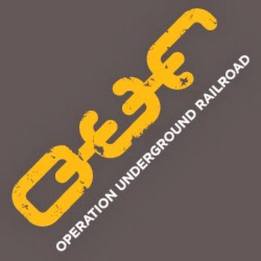 1.
1.  2. The
2. The  3.
3.  4.
4. 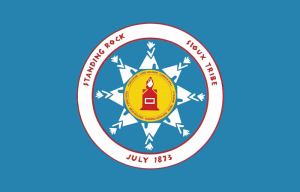 5.
5.  6.
6.  7.
7.  8.
8.  9.
9.  Refugees on Rails
Refugees on Rails 10.
10. 































